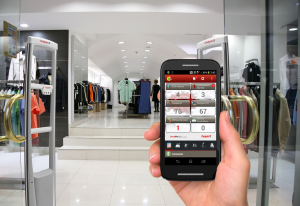There is no question that employee happiness in the workplace can be an asset to your company. Happy employees that are valued can give a business the edge they need to make their business a success. Happy employees are less likely to steal from you, and are less likely to call off regularly. Having employees that feel appreciated can be an advantage to your retail business, and a tool to prevent shoplifting.
For more about shoplifting, follow the links below.
Retailers Experience Success Due to Employee Engagement
Expert advice on how retailers can craft customized services in order to strengthen financial performance through greater quality of management and employee engagement.
Management consultant Oliver “O. Lee” Mincey, who focuses on employee engagement and the attributes of great management, has nearly 25 years of training and leadership development experience. He has developed training and learning programs positively impacting well over 40,000 people for clients and previous employers including Six Flags, Disney, Universal Studios and House of Blues.
Founded in 2009, Oliver Mincey Co. designs strategies to help clients solve their most complex and interesting leadership and employee engagement challenges. Engagement helps reduce costs associated with poor employee retention, relations and morale. Its core values are: Do what is right, always; take ownership and get it done; inspire passion for people; focus on outcomes; fuel growth and innovation for both us and our clients; and embrace good cheer.
Mincey shared five tips for great management and his secrets of employee engagement. A great manager, he said:
Online crime system blitz on retail theft
A new cloud-based crime reporting system could prevent up to $2 million of retail thefts every day.
Police have teamed up with Auckland-based company Auror who developed software that streamlines crime reporting processes.
The software will be rolled out nationally after successful trials in Counties Manukau and Canterbury.
The software enables retailers to complete incident reports and provide relevant information to police about thefts including shoplifting and petrol drive-offs, and other incidents.
The information can be shared between retailers to prevent further offending.
A Police National Headquarters spokeswoman said all information shared through the Auror portal was automatically forwarded to the police crime reporting line.
SeeTec Cayuga BVI Retail Combines Article Surveillance With Video Analytics For Retail Security
If you believe recent surveys to be true, commercial damage in Germany caused by retail shrinkage accounts for about 3.8 billion Euro per year – this is one per cent of the total turnover of this industry. More than half of this is caused by shoplifting. Another 40 % of the total amount can be related in equal terms to employees and suppliers.
The retail industry’s answer to this enormous volume of damage is obvious: prevention and investigation by combining traditional article surveillance and intelligent video technology. Video-based systems do not only reduce retail shrinkage. They can also be used to better understand customers and their buying behaviorand to optimize the sales approach. SeeTec Cayuga BVI Retail provides solutions for both requirements.
Challenges Faced By Retail Business
Highstreet retail businesses don’t have an easy time: Online trading provides maximum price transparency and therefore puts enormous pressure on the margins through a plain cost structure and 24/7 opening hours.



 I’m seeing a huge spike in return fraud, so I’m betting you are too. For my particular stores, it is a huge problem. I will venture to say that it is the biggest and most financially impactful fraud scheme that is affecting my stores; and it’s only getting bigger. I’m fortunate enough to have a small team within our LP department that do nothing but review returns data. When they see something that is indicative of fraud, we actually cancel the store credits unless proof of purchase can be verified. We are poised to break 5 million dollars in suspended store credits this year. Insane.
I’m seeing a huge spike in return fraud, so I’m betting you are too. For my particular stores, it is a huge problem. I will venture to say that it is the biggest and most financially impactful fraud scheme that is affecting my stores; and it’s only getting bigger. I’m fortunate enough to have a small team within our LP department that do nothing but review returns data. When they see something that is indicative of fraud, we actually cancel the store credits unless proof of purchase can be verified. We are poised to break 5 million dollars in suspended store credits this year. Insane.
 Shoplifting costs the retail industry million of dollars daily.
Shoplifting costs the retail industry million of dollars daily. 



